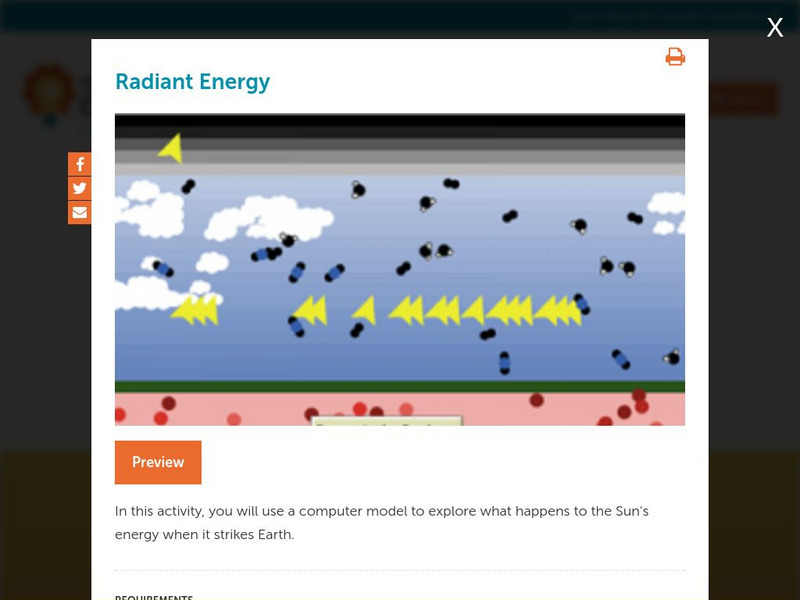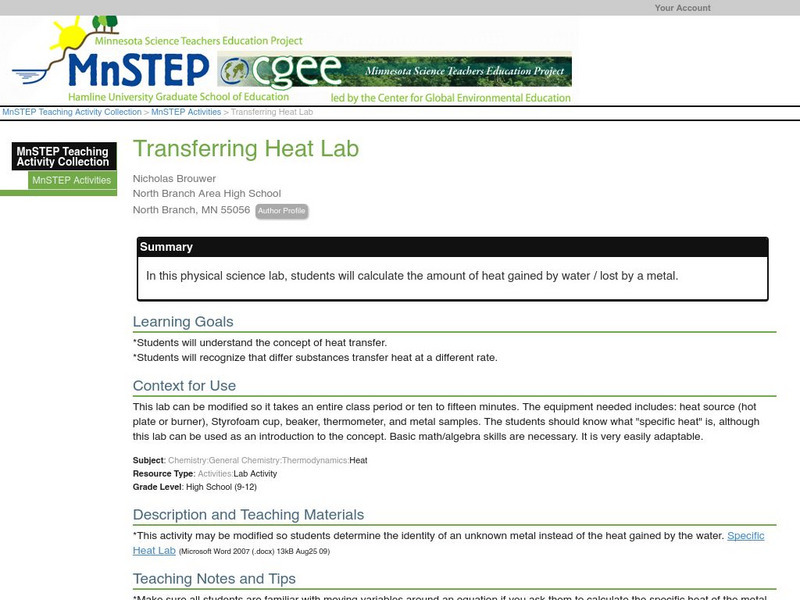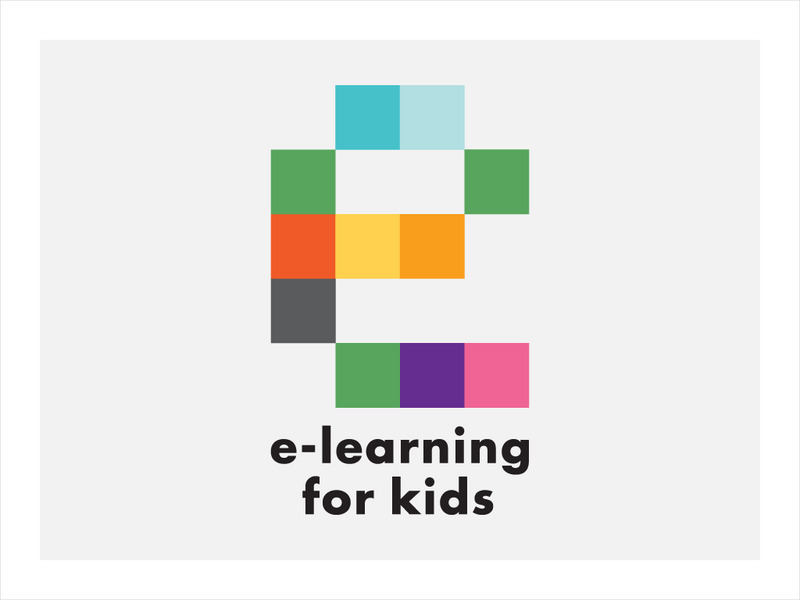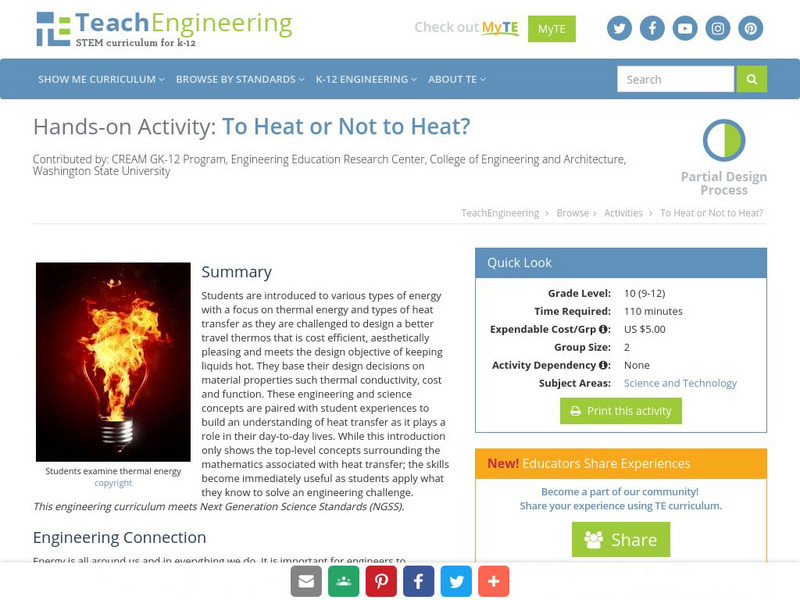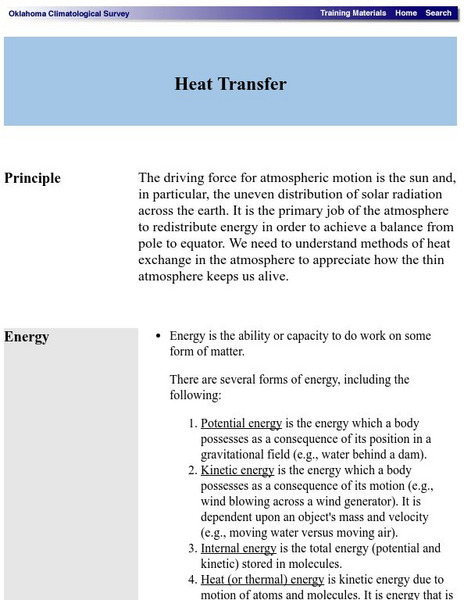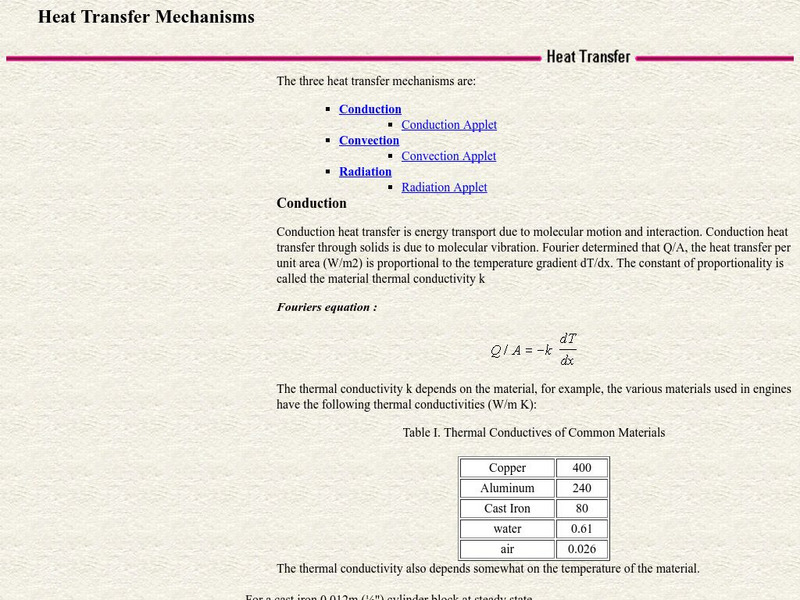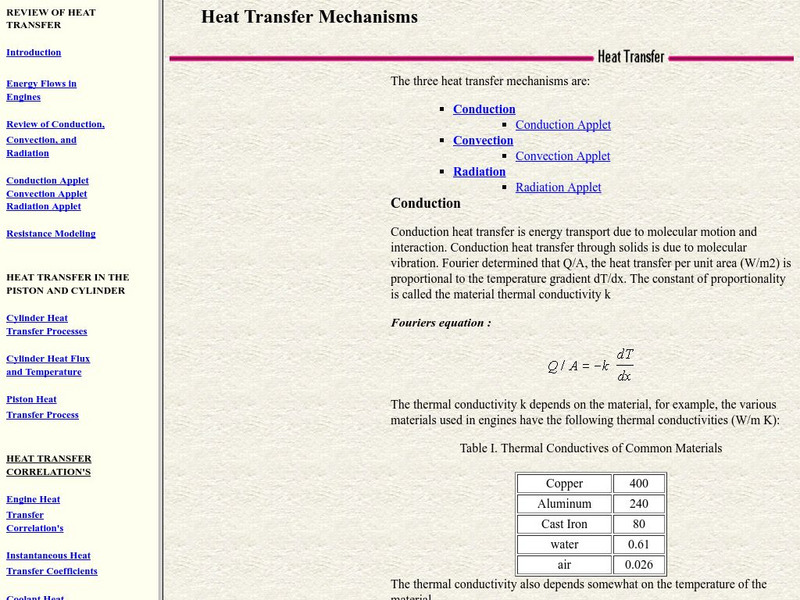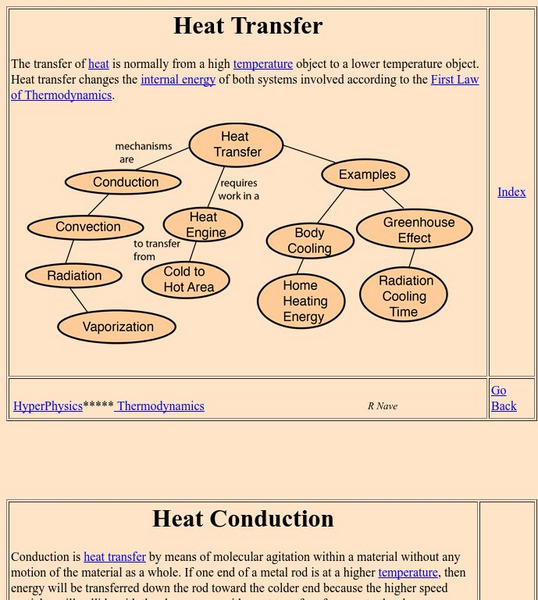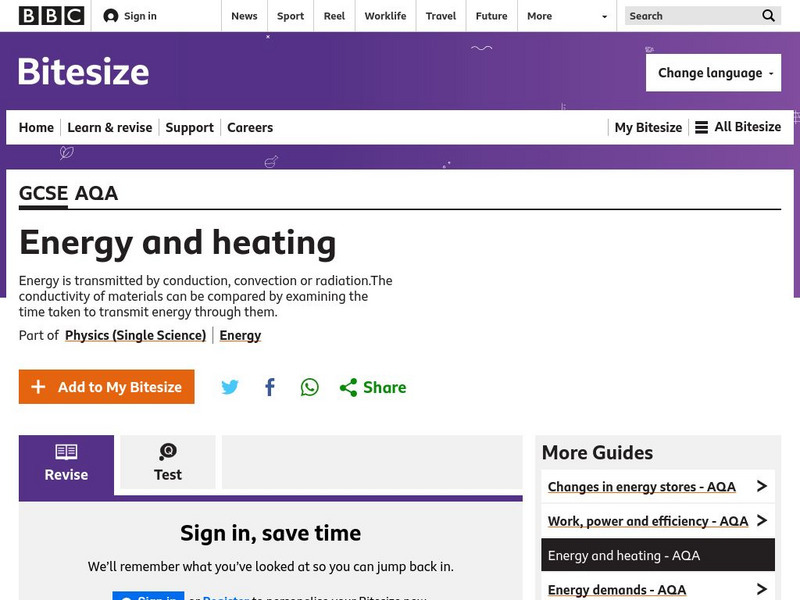Concord Consortium
Concord Consortium: Stem Resources: Heat and Light From Electricity
Understand the energy transformations that happens when you light a bulb with a battery. Activity requires students to build a simple circuit and take temperature and time measurements. Lab includes procedure with questions that can be...
CK-12 Foundation
Ck 12 Exploration Series: Simulations: Physics: Hot Oven
[Free Registration/Login Required] Do you know why the metal in the oven burns your skin but the air in the oven doesn't? This simulation will show you the relationship between heat energy and temperature.
Physics Classroom
The Physics Classroom: Thermal Physics: What Does Heat Do?
This physics tutorial covers the topic of measuring the quantity of heat that is transferred between the system and the surroundings. Students learn about calorimetry- the science associated with determining the changes in energy of a...
Climate Literacy
Clean: Hurricanes as Heat Engines
For this activity, students examine the effects of hurricanes on sea surface temperature using NASA data. They examine authentic sea surface temperature data to explore how hurricanes extract heat energy from the ocean surface.
State University of New York
State University of New York: Heat Transfer Between Substances
The following simulation assesses students understanding of thermal energy, transfer and equilibrium.
FT Exploring
Ft Exploring: Energy, Heat Flow, and Life
Here you can learn all about heat flow, one of the major driving forces of nature, and how it works. It is the force behind weather, photosynthesis, animal behavior, and much more.
Concord Consortium
Concord Consortium: Stem Resources: Radiant Energy Flow
A virtual lab to look at the physical features of Earth that affect the amount of the Sun's energy that hits Earth. Students investigate how solar and infrared radiations enters and leaves the atmosphere with this model. Virtual lab...
Science Education Resource Center at Carleton College
Serc: Transferring Heat Lab
In this physical science lab, students calculate the amount of heat transfer between water and a metal.
E-learning for Kids
E Learning for Kids: Science: Titanic Shipwreck: How Does Heat Travel?
David is exploring the Titanic shipwreck. He needs to stay warm down below in the water. Help him learn about heat and temperature.
Physics Aviary
Physics Aviary: Mechanical Equivalent of Heat Lab
This lab is designed to have students look at a greatly simplified version of James Joule's experiment showing the conversion of mechanical energy to heat.
TeachEngineering
Teach Engineering: To Heat or Not to Heat?
Students are introduced to various types of energy with a focus on thermal energy and types of heat transfer as they are challenged to design a better travel thermos that is cost efficient, aesthetically pleasing and meets the design...
TeachEngineering
Teach Engineering: Heat Transfer: From Hot to Not
Students learn the fundamental concepts of heat transfer and heat of reaction. This includes concepts such as physical chemistry, an equation for heat transfer, and a basic understanding of energy and heat transfer.
TeachEngineering
Teach Engineering: Heat Transfer: No Magic About It
Heat transfer is an important concept that is a part of everyday life yet often misunderstood by students. In this lesson, students learn the scientific concepts of temperature, heat, and the transfer of heat through conduction,...
TeachEngineering
Teach Engineering: What Is Heat?
Students learn about the definition of heat as a form of energy and how it exists in everyday life. They also learn about the three types of heat transfer as well as the connection between heat and insulation.
TeachEngineering
Teach Engineering: Solar Water: Heat It Up!
Students explore energy efficiency, focusing on renewable energy, by designing and building flat-plate solar water heaters. They apply their understanding of the three forms of heat transfer (conduction, convection and radiation), as...
TeachEngineering
Teach Engineering: Energy
Through nine lessons, students are introduced to a range of energy types--electrical, light, sound and thermal-as well as the renewable energy sources of wind, hydro (water) and solar power. Subjects range from understanding that the...
TeachEngineering
Teach Engineering: Energy Efficient Housing
We all know that it takes energy to provide us with the basics of shelter: heating, cooling, lighting, electricity, sanitation and cooking. To create energy-efficient housing that is practical for people to use every day requires...
American Chemical Society
Middle School Chemistry: Heat, Temperature, and Conduction
Explore heat, temperature, and the conduction of thermal energy through different materials.
Science4Fun
Science4 Fun: Heat
What is heat? Illustrated discussion of how heat is transferred and its effect on the states of matter.
Oklahoma Mesonet
Oklahoma Climatological Survey: Heat Transfer
A discussion from the Oklahoma Climatological Survey of the thermal factors effecting the movement of air masses in the atmosphere. Numerous topics such as methods of heat transfer, latent heat, phase changes (including sublimation and...
Colorado State University
Csu: Heat Transfer Mechanisms
An excellent page from the Colorado State University with a heavy mathematical emphasis. Each form of heat transfer--conduction, convection, and radiation--is defined, compared, and contrasted. Mathematical equations governing the rates...
Colorado State University
Colorado State University: Heat Transfer Mechanisms
An excellent page from the Colorado State University with a heavy mathematical emphasis. Each form of heat transfer--conduction, convection, and radiation--is defined, compared and contrasted. Mathematical equations governing the rates...
Georgia State University
Georgia State University: Hyper Physics: Heat Convection
Using understandable words and exceptional graphics, this page describes the transfer of energy by means of the convection process. Contains several links to related topics.
BBC
Bbc: Gcse Bitesize: Energy and Heating
Energy is transmitted by conduction, convection or radiation.The conductivity of materials can be compared by examining the time taken to transmit energy through them. This lesson explains how conduction works and provides a link to a test.







